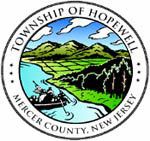By Frank Mustac, Contributor
With the Pennytown development plan having made it past the Hopewell Township Planning Board, it is now back in the hands of the Township Committee.
Originally, the committee had intended to hold a work session during its meeting on Sept. 26 to discuss the recommendations made in a report prepared by the Planning Board, but rescheduled the session for Oct. 24.
Committeewoman Julie Blake said on Monday evening that she had just received the report and did not have a chance to review its contents. She also suggested the governing body take its time reviewing the report.
“I just saw this thing tonight, too, and already I don’t like it,” said Committeeman John Hart.
Mr. Hart objected to the recommendation that “green buildings” be constructed on the township-owned Pennytown site, located at the junction of routes 31 and 654.
The federal Environmental Protection Agency (EPA) defines a green building as “a sustainable or high performance building.”
During the public comment portion of the meeting, Mike Pisauro of the Stony Brook-Millstone Watershed Association spoke in favor of green buildings.
Green buildings, he said, “are an amenity that actually receive a premium on rent and leases.”
With green structures, Mr. Pisauro said, “you create an environment where people want to come to lease or buy. You are also reducing environmental costs for heating and cooling.”
Green infrastructure, he said, will “encourage the recharge of water” into the ground at the 25-acre Pennytown property, purchased by Hopewell Township in 2008 for $6.65 million.
Earlier this year, the Township Committee hired the Clarke Caton Hintz firm in Trenton to prepare the current redevelopment plan for Pennytown with the intention to sell the property.
Restoring the Pennytown property to a more productive state, while preserving and reusing the historic single-family residence known as the Marshall House on the land that is part of the hamlet of Marshall’s Corner, are just two of several objectives outlined in the plan. The proposal also calls for preserving the pond and stream corridor along the Stony Brook Branch.
Under New Jersey’s redevelopment rules, the Planning Board is required to review the plan initiated by the Township Committee and report back to the committee.
Mayor Kevin Kuchinski said he had read the Planning Board’s report in detail and characterized some of the suggestions in it as “reasonable,” including the board’s “clarification that there will not be an extension of public sewers to this site.”
“I think that was a good suggestion,” Mr. Kuchinski said.
During a previous meeting held in late August, the mayor also spoke about his opposition to public sewers for Pennytown.
“Speaking for myself and not on behalf of the committee, I think there are some monstrous barriers for any party to try and extend sewers there,” the mayor said. “I am less concerned about (potable) water. I am more concerned about sewers and the potential of unbridled development. I would personally be against bringing public sewers to Pennytown.”
The next public hearing on the Pennytown redevelopment plan will take place on Monday, Oct. 24.

